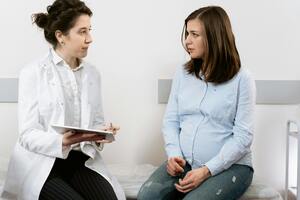 Women with diabetes face unique challenges due to hormonal fluctuations across their lifespan. From menstruation and PMS to pregnancy, menopause, and conditions like PCOS, hormone shifts can significantly impact blood sugar control. Understanding these changes can empower women to take better control of their diabetes and overall health.
Women with diabetes face unique challenges due to hormonal fluctuations across their lifespan. From menstruation and PMS to pregnancy, menopause, and conditions like PCOS, hormone shifts can significantly impact blood sugar control. Understanding these changes can empower women to take better control of their diabetes and overall health.
How Hormones Affect Blood Sugar in Women
Menstrual Cycle and Blood Sugar Fluctuations
Progesterone levels rise during the luteal phase (the second half of the menstrual cycle). This hormone can reduce insulin sensitivity, often leading to higher blood sugar levels 3–5 days before and during menstruation.
Tracking Tip: Monitor blood sugar patterns before, during, and after your period for 2–3 cycles. Using a continuous glucose monitor (CGM) can help you identify and respond to trends.
Managing Blood Sugar During PMS and Periods
Premenstrual symptoms like bloating, mood changes, and fatigue may worsen when blood sugar is elevated. Tracking mood and glucose can help make timely adjustments to your diabetes plan.
Tips for PMS Blood Sugar Management:
- Monitor more frequently during PMS.
- Adjust insulin or carbohydrate intake if needed (with medical guidance).
- Stay active—even gentle walking can improve insulin sensitivity.
- Choose balanced snacks (e.g., Greek yogurt with berries, nuts with dark chocolate).
PCOS and Diabetes: What Women Need to Know
Polycystic Ovary Syndrome (PCOS) affects 6–10% of women and is strongly linked to insulin resistance, increasing the risk for Type 2 diabetes.
Common PCOS Symptoms:
- Irregular or absent periods
- Acne and excess facial/body hair
- Weight gain or difficulty losing weight
- Infertility
PCOS and Diabetes Treatment Options:
- Metformin improves insulin sensitivity.
- GLP-1 receptor agonists (like semaglutide) support weight loss and reduce insulin resistance.
- Lifestyle adjustments—regular exercise and balanced nutrition—are essential.
- Hormonal contraceptives can regulate cycles and reduce androgen levels.
Birth Control Considerations for Women with Diabetes
Most birth control methods are safe for women with diabetes, but estrogen-containing options may carry a slightly increased risk of blood clots.
Best Options:
- Progestin-only birth control (e.g., hormonal IUDs, implants) is often safer.
- Non-hormonal options like copper IUDs or condoms work well for those at higher risk of clotting.
- If using the pill, choose low-dose estrogen and monitor blood pressure and cholesterol regularly.
Menopause and Diabetes: What to Expect
Menopause can bring new challenges, including:
- Increased insulin resistance
- More frequent low or high blood sugars
- Weight changes and mood fluctuations
Hormone Replacement Therapy (HRT) can improve symptoms, but it must be evaluated case-by-case, especially in women with cardiovascular risks or a history of blood clots.
Sexual Health and Diabetes
Hormonal shifts, nerve damage, and circulation issues can affect sexual health in women with diabetes. Good glucose management may reduce the risk of complications.
Common Issues and Supportive Strategies:
- Vaginal dryness: Use lubricants or ask your doctor about vaginal estrogen.
- Yeast infections: Keep blood sugar levels in range and consider probiotics.
- Painful intercourse (vaginismus): Pelvic floor exercises may help.
- Low libido or difficulty reaching orgasm: Talk to a healthcare provider to explore causes and solutions.
Final Thoughts: Empowering Women with Diabetes
From puberty through menopause, women experience hormonal changes that can significantly impact diabetes management. By tracking menstrual and menopausal patterns, staying active, and working with your healthcare team, you can make personalized adjustments that support your blood sugar control and overall well-being.
Helpful Resources:
- Women and Diabetes – American Diabetes Association
- The Impact of Menstrual Cycle on Glucose Control
- CDC – PCOS and Diabetes
- Cleveland Clinic: Understanding Menopause
Last Updated on May 15, 2025

